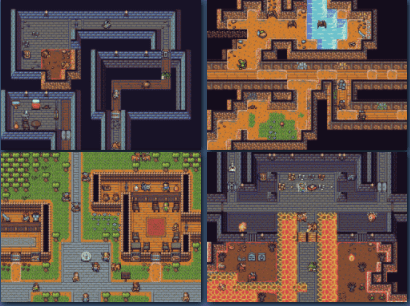My other side project continues

This is the social mobile multiplayer game I have mentioned before. The initial game creation program is mostly working. I say mostly because I will still be adding to it. It does however create all of the game data in about 30 seconds for a game that can hold up to 10,000 players. It then creates the output files which are read by the mobile apps. These apps have yet to be created but I’ve decided to do some early testing using non-mobile apps that I’m working on.
What I want to do is prototype the mobile app, not particularly visually but functionally. To this end I’m creating a C# client desktop app that does everything that the mobile app will do. It can read the data (directly rather than via a webserver) and let me create new orders and upload them back to the server (or in this case my development PC).
This client will be crude and not great looking but lets me test that data is coming and going correctly. I use JSON for everything, as a data transfer format as well as storing all game data at rest as opposed to a database. It lets me hold all game data in dictionaries (with a bit of tweaking it is possible to save/load lists of objects to JSON. After loading I convert them to Dictionaries using an Id field.
var bytes = File.ReadAllText(Lib.PeopleFilename);
var list = new List();
list = JsonSerializer.Deserialize<List>(bytes);
persons = list.ToDictionary(x => x.Id);It works and is quick. The downside of using a Dictionary is that it occupies more bytes per element than a List. How many? Well it’s never easy to figure. .NET does not really encourage discovering how things are implemented. This GitHub project by developer Ludovit Scholtz shows the memory used by various .NET Generic Collection Types (HashTable, Dictionary, ConcurrentDictionary, HashSet, ConcurrentBag, Queue and ConcurrentQueue) with various string lengths in a TestObject which as string, an int and a DateTimeOffset.
Storing a million objects in a Dictionary <int,TestObject> with a null string occupies 48,222,240 bytes so roughly 48 bytes per entry. I believe a List is closer to 20 bytes overhead per element. So for slightly more than double the memory use, using a Dictionary gives a tangible performance yield.
,



 The original rogue used graphics. This was back in the era of terminals and home computers and graphics could be quite limited. So there’s a tradition of using text. However if you do a google image search for rogue game like I did here, you can see that while many of them are text there are a couple that are graphics.
The original rogue used graphics. This was back in the era of terminals and home computers and graphics could be quite limited. So there’s a tradition of using text. However if you do a google image search for rogue game like I did here, you can see that while many of them are text there are a couple that are graphics. As well as games programming, I like game design and one of the best ways to practise this arcane art is to look at other people’s ideas and borrow/pinch/steal/be inspired by them.
As well as games programming, I like game design and one of the best ways to practise this arcane art is to look at other people’s ideas and borrow/pinch/steal/be inspired by them.
 This is for my MMO game. I need a backend server, so yesterday I signed up for a vps service. I picked Ubuntu 20.04 LTS which I’ve used before and received the login details. I use Putty to log in via SSH and WinSCP for browsing, copying files. Installing Apache2 is actually very easy. Likewise PHP. I didn’t install MySQL which might have been a mistake, so I had a LAP system (Linux, Apache, PHP) rather than LAMP.
This is for my MMO game. I need a backend server, so yesterday I signed up for a vps service. I picked Ubuntu 20.04 LTS which I’ve used before and received the login details. I use Putty to log in via SSH and WinSCP for browsing, copying files. Installing Apache2 is actually very easy. Likewise PHP. I didn’t install MySQL which might have been a mistake, so I had a LAP system (Linux, Apache, PHP) rather than LAMP. I occasionally answer (often in a somewhat ascerbic tone) questions on
I occasionally answer (often in a somewhat ascerbic tone) questions on  The celebrity game I’m building and I’ve been describing is free to play but servers cost money, so how does it make money?
The celebrity game I’m building and I’ve been describing is free to play but servers cost money, so how does it make money?